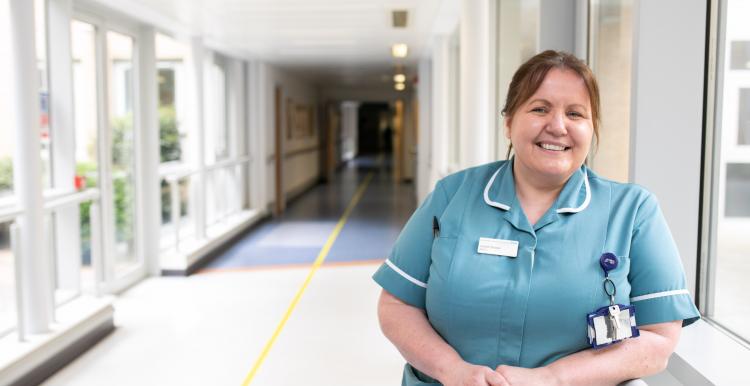Urgent and Emergency Care Recovery Plan

On Monday, Department of Health and Social care (DHSC) and NHS England published the Delivery Plan for Recovering Urgent and Emergency Care Services. There was a lot of media coverage, but what will the plan mean for patients, and what should you be on the lookout for?
The list of commitments on the second page is a good place to start. They are listed under:
-
Increase capacity, to help deal with increasing pressures on hospitals which see 19 in 20 beds currently occupied.
-
Grow the workforce, as increasing capacity requires more staff who feel supported
-
Speed up discharge from hospitals, to help reduce the numbers of beds occupied by patients ready to be discharged
-
Expand new services in the community, as up to 20% of emergency admissions can be avoided with the right care in place
-
Help people access the right care first time, as 111 should be the first port of call and reduce the need for people to go to A&E.
Two ‘ambitions’ are highlighted:
-
Patients being seen more quickly in emergency departments: with the ambition to improve to 76% of patients being admitted, transferred or discharged within four hours by March 2024, with further improvement in 2024/25. (This is a reduction on the previous target which was 95% in 4 hours. The lack of a longer-term plan to return to that standard is a concern.)
-
Ambulances getting to patients quicker: with improved ambulance response times for Category 2 incidents to 30 minutes on average over 2023/24, with further improvement in 2024/25 towards pre-pandemic levels.
Before going any further, we need to acknowledge that the NHS already has severe workforce shortages – vacancy rates mentioned as 11.8% - and these ambitions will rely on an increased workforce. In the current climate, that is likely to be incredibly challenging. (And that’s before we get on to the crisis in social care.)
The second important factor is that many of these changes will take place over the next year and beyond – so are unlikely to make major changes in the short-term.
One positive aspect of the plan is that in the section about why a plan is needed, it includes what will be delivered for patients and the public. This includes some of the actions we have called for:
“We recognise that patients want better communication on time spent in A&E, want a better understanding of how to access the right care to avoid multiple handovers between services, and want greater continuity of care so that they do not have to repeat their story as they go through the system.”
Some elements of the plan have been challenged:
-
The promise that “there will be 5,000 more staffed, sustainable beds in 2023/24” will include 4,000 temporary beds being made permanent and 1,000 new beds.
-
The plan for 800 new ambulances is framed in terms of tacking issues other than handovers. As this is part of “improvement and replacement” of the fleet, it’s not entirely clear how many of these ambulances will be ‘additional’ rather than ‘new’.
-
The schemes to support mental health crisis response are included, but have been announced separately recently.
There is an extensive section on workforce. To an extent, this relies on the yet-to-be published workplan – and doesn’t seem to take account of the likely impact of current industrial action on staffing. The plan also has a role for volunteers:
“We also know that volunteers can play a crucial role delivering care, as seen so clearly during the COVID pandemic, and we want to further build on this in roles across health and social care.”
Volunteers have, of course, had a long history of supporting the NHS and were particularly valuable during the pandemic. The plan sees them having a role across both health and social care:
NHS Volunteer Responders programme – we will relaunch this programme by April 2023, expanding its remit into social care. Health and social care providers should maximise the opportunities to use volunteers, including in the organisations themselves, and for supporting people in the community who are at risk of admission or recently discharged.
One of the criticisms of the Volunteer Responders scheme during the pandemic was that it set up something new, potentially at the expense of valuable local infrastructure. That risk looks to remain in the plan.
The section on hospital discharge looks at an increase in capacity for step-down services. Local areas are expected to develop ‘integrated care transfer hubs’. The plan identifies core elements of the basis of an effective hub rather than setting our how they must be delivered.
The section on ‘scaling up social care services’ lists funding announced in the 2022 Autumn Statement. Further details will come as part of the Local Government Finance Settlement in February.
The section on ‘expanding care outside hospital’ will interest a lot of people, although it is likely to be affected by workforce challenges. This is seen as particularly valuable in relation to falls and for older people living with frailty and people experiencing a mental health crisis. There will be improved use of Urgent community response (UCR) teams, which operate twelve hours a day seven days a week, with the expectation that they will reach 70% of patients within two hours. This is expected to lead to more referrals to community services rather than ambulances. Although £77 million is allocated for community health services, it will still rely heavily on the workforce plan.
One important aspect of the approach is the expansion of ‘virtual wards’, both capacity and utilisation. The longer-term ambition is to reach 40 – 50 virtual wards per 100,000 people. Different areas are developing different ways of working, so there is a commitment to “a data-driven approach to peer review that supports implementation”.
The section on ‘making it easier to access the right care’ emphasises the importance of NHS 111. Again, the plan talks about testing different models., so it’s still not clear how this may play out in future. It seems like a bit of a weakness that there doesn’t seem to be a focus on involving patients in this area of work – especially as we keep hearing about experiences of NHS 111 especially given that pre-booking into A&E via 111 First was formally rolled out nationally last year but the promised patient evaluation never materialised. Support for mental health is highlighted, but it’s not clear how well people will be informed about the service.
Things to look out for
-
NHSE will publish data on 12-hour waits in A&E (from arrival rather than decision to admit) to improve transparency.
-
As part of the new approach, anybody admitted as an in-patient should have an estimated discharge date.
-
From April 2023, NHSE will have three tiers of intervention:
-
Tier one: core offer – universal support offer for systems on track, including specialty guidance, peer review and sharing of best practice.
-
Tier two: light touch – for systems largely on-track, support including regional reviews and deep-dives to diagnose challenges and drive improvement.
-
Tier three: intensive support – for systems off-target on delivery, support including on-the-ground planning, analytical and delivery capacity, “buddying” with leading systems and executive leadership.
What does this mean for patients and for Healthwatch?
The plan does cover many of the issues that people are raising with you and that are regular covered in the media: delayed discharge, ambulance response times and waits in A&E etc. Some parts of the plan are longer-term so people may not see improvements immediately.
We are particularly interested in any feedback you are getting about virtual wards. At Healthwatch England, we are pushing nationally to see an evaluation of them done before the roll out is stepped up ahead of next winter, so your insight could be really valuable.
The plan sets out expectations but it recognises that much of the implementation will be designed at a local level meaning that responses may very in different areas, even if they are working to the same targets. The plan looks weak on how people and communities will be involved in these changes, so there will certainly be a role for you to make sure that people are appropriately engaged. An important aspect of this will be how well any changes are communicated to people – for example, if people have had bad experiences of NHS 111 locally, any campaign will need to take account of that. It’s certainly an area where Healthwatch expertise can come to the fore.
When you’re looking to hold your system to account – whether at system, place or individual provider level - the plan points you in the direction of some useful lines of enquiry, such as:
-
Are targets being met?
-
What has been the impact – of meeting or not meeting the target -on patient experience?
-
Did in-patients have an estimated discharge date? (And what did it mean for the patient?
All of this is going to rely heavily on the imminent workforce plan, so that’s going to be something else to factor in.

